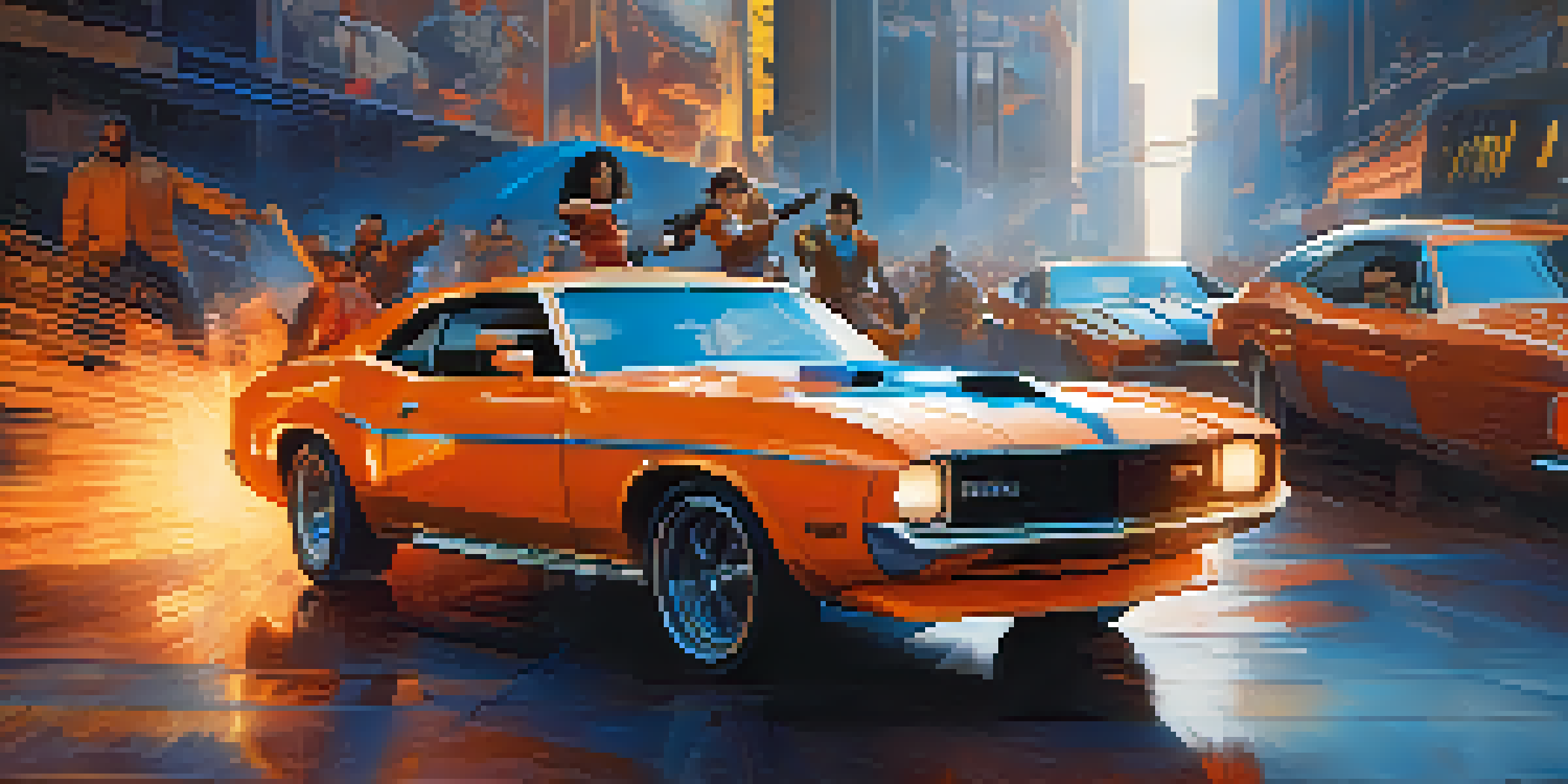Using Trailers Effectively to Capture Audience Attention

Understanding the Purpose of Trailers
Trailers are more than just previews; they serve as a sneak peek into your content, whether it's a film, video game, or a product. Their primary purpose is to generate excitement and intrigue among potential viewers. By offering a glimpse of what to expect, trailers can effectively set the tone and build anticipation.
A trailer is like a teaser – it’s a way to whet the audience's appetite.
Think of a trailer like a first date; it has to be compelling enough to make someone want to know more. This brief introduction can make or break your audience’s interest. A well-crafted trailer can create buzz, leading to increased engagement when the actual content is released.
Ultimately, understanding the purpose of a trailer allows creators to focus on the key elements that will resonate with their target audience. Knowing what draws people in is essential for crafting a memorable and effective trailer.
Crafting a Compelling Story Arc
Every great trailer tells a story, even in its brief runtime. A compelling story arc captivates viewers by introducing characters, setting the stakes, and hinting at a conflict. This narrative structure keeps the audience engaged and wanting to see the resolution.

For example, the trailer for a suspenseful movie might show glimpses of the protagonist facing danger, interspersed with moments of tension. By strategically revealing information, the trailer can evoke emotions and encourage viewers to invest in the story.
Trailers Generate Excitement
Trailers serve as enticing previews that build anticipation and interest in the content.
The key is to balance intrigue with clarity; you want to entice without confusing. A well-developed story arc not only highlights the content's strengths but also ensures that viewers leave with questions that can only be answered by watching the full piece.
Using Visual and Auditory Elements Effectively
Visuals and sound play a crucial role in making trailers memorable. High-quality footage, compelling graphics, and engaging soundtracks can elevate a trailer from ordinary to extraordinary. These elements work together to create an immersive experience that resonates with the audience.
The best trailers are the ones that leave you wanting more.
Consider how a powerful soundtrack can evoke emotions even before any dialogue is spoken. A haunting melody might signal suspense, while an upbeat tune can suggest adventure. By carefully choosing these elements, creators can enhance the emotional connection with viewers.
Moreover, striking visuals can leave a lasting impression. Stunning cinematography or eye-catching graphics can draw people in and make them eager to learn more. The right combination of visuals and sound can be the defining factor in capturing your audience's attention.
Keeping It Short and Sweet
In an age of information overload, brevity is key. The most effective trailers are usually concise, often lasting only a minute or two. This limited time frame forces creators to highlight the most compelling aspects of their content without overwhelming the audience.
Think of it like a taste test: just enough to entice your palate but not enough to fill you up. A short trailer can spark curiosity, prompting viewers to seek out the full experience. By focusing on the highlights, you can create a sense of urgency and excitement.
Trailers Build Excitement
Trailers serve as a sneak peek that generates anticipation and intrigue for upcoming content.
Remember, the goal is to leave viewers wanting more. By keeping your trailer short and impactful, you enhance the chances of capturing attention and driving engagement with your content.
Incorporating Call-to-Action Elements
A successful trailer doesn’t just entertain; it also guides viewers toward the next step. Incorporating a clear call to action (CTA) at the end can effectively direct your audience on what to do next. Whether it’s visiting a website, subscribing, or watching the full content, a CTA can significantly impact engagement.
For instance, a movie trailer might end with a release date or a prompt to buy tickets. This not only builds anticipation but also provides a clear pathway for viewers to follow. The inclusion of a CTA turns passive viewers into active participants.
By making it easy for the audience to engage further, you're not just creating a trailer but a bridge to deeper interaction with your content. A well-placed CTA can be the nudge that converts interest into action.
Testing and Analyzing Audience Reactions
Creating a trailer is just the beginning; understanding how it resonates with your audience is equally important. Testing different versions of a trailer can provide valuable insights into what elements work best. By analyzing viewer reactions, you can refine your approach and enhance future trailers.
For example, consider conducting focus groups or utilizing online analytics to gauge audience responses. Metrics such as engagement rates, shares, and comments can offer a wealth of information about what captivates your viewers. This feedback loop is crucial for continuous improvement.
Effective Use of Visuals and Sound
High-quality visuals and soundtracks enhance emotional connections, making trailers memorable and engaging.
Ultimately, being attuned to audience reactions allows you to tailor future trailers to better meet their preferences. This iterative process ensures that you’re not just guessing what works, but actually responding to what your audience desires.
Learning from Successful Trailer Examples
One of the best ways to improve your trailer-making skills is to analyze successful examples. Take a look at trailers that have captured widespread attention and try to identify the elements that made them work. From pacing to storytelling, there’s much to learn from the best in the industry.
For instance, trailers from blockbuster movies often feature rapid cuts, suspenseful music, and dramatic voice-overs. Each of these elements serves a specific purpose, working in harmony to create excitement and anticipation. By dissecting these components, you can glean insights that can elevate your own trailers.

Remember, inspiration can come from various sources. Whether it’s a popular movie, a viral video game trailer, or even commercials, studying what resonates with audiences can spark ideas and help you develop your unique style.